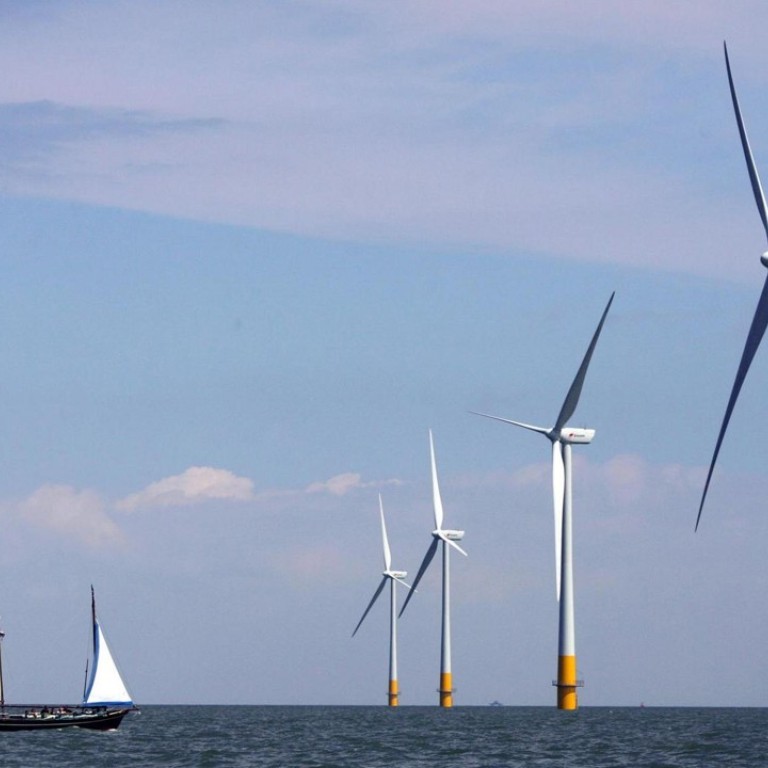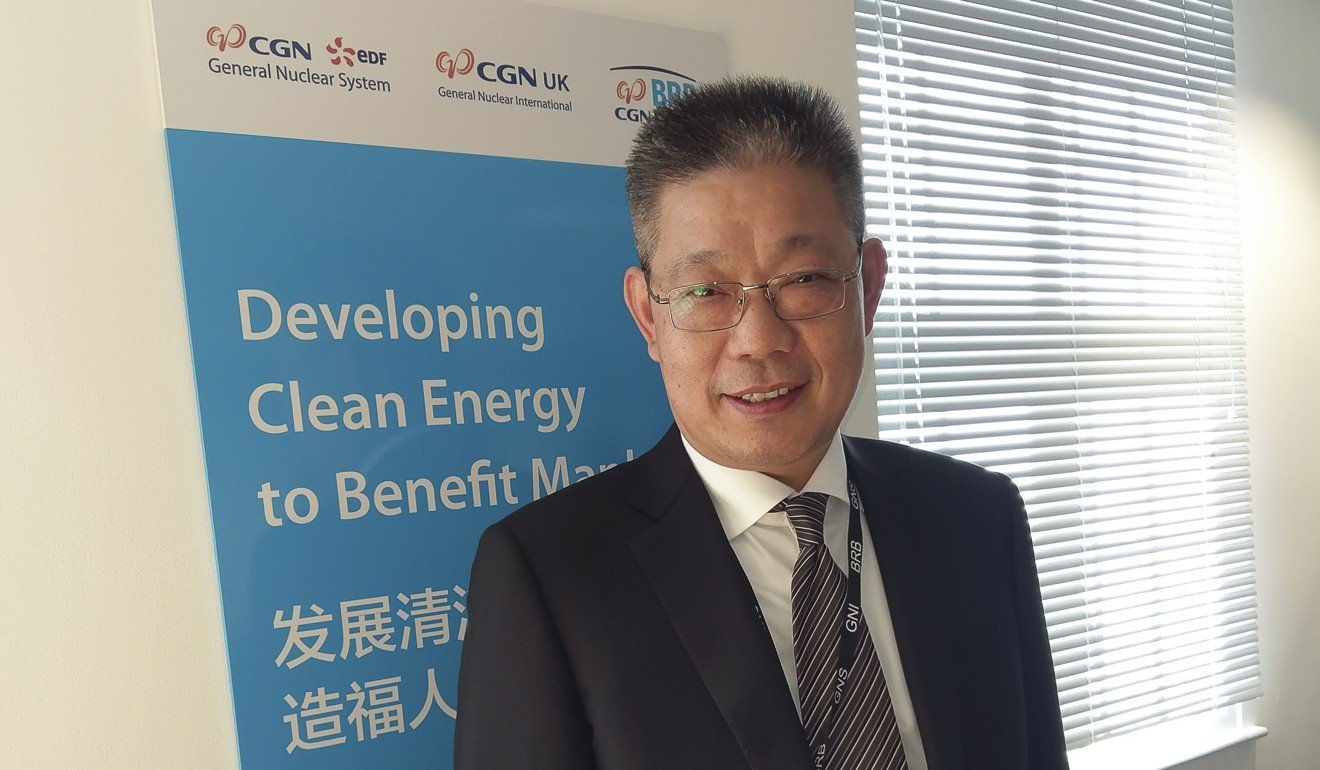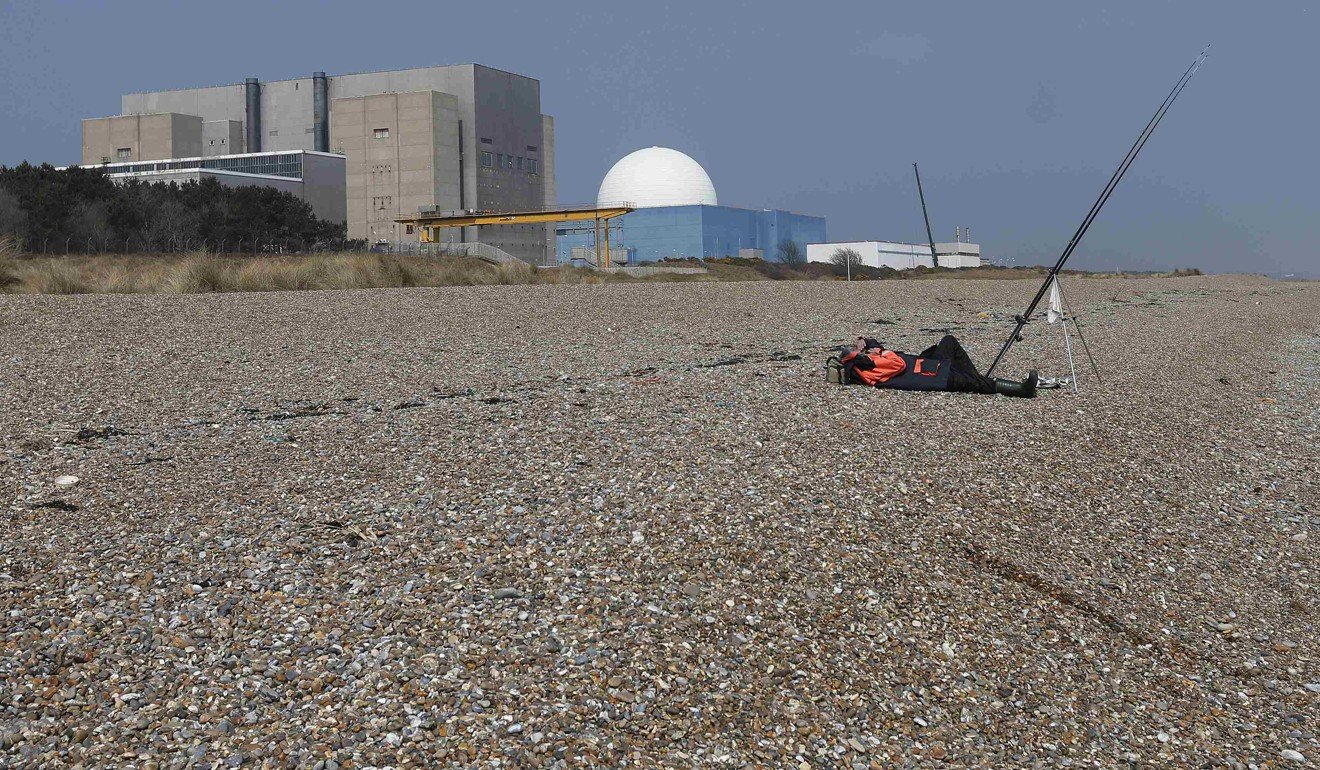
China’s largest nuclear power developer eyes wind and gas projects in addition to maiden venture in UK
CGN has stakes in UK’s Hinkley Point C, Sizewell C and Bradwell B nuclear plant projects
China General Nuclear Power Group (CGN), a key implementer of Beijing’s Belt and Road Initiative, is seeking non-nuclear, clean energy project opportunities in Britain, even as it works to keep its maiden nuclear project in the country on time and within budget while pushing ahead with preparatory work on two others, according to the chief executive of its UK unit.
The Shenzhen-based state-owned company, China’s largest and the third-largest nuclear power projects operator globally, wants to invest in Britain’s natural gas and wind power projects, said General Nuclear International chief executive Zheng Dongshan.
In the UK, we aim to become an important and reliable developer, operator and builder of clean energy projects
“In the UK, we aim to become an important and reliable developer, operator and builder of clean energy projects,” Zheng said in London, adding that it would not be inconceivable for CGN to one day reach the current operating scale of EDF Energy, the UK’s largest power generator.
To meet its clean energy goals, Britain has been gradually decommissioning old nuclear reactors and shutting down coal-fired plants, which opens up opportunities for the development of new clean energy projects.
According to a forecast by the Department for Business, Energy and Industrial Strategy, the UK’s nuclear power output will almost double by 2035 from last year, and that of renewable power by about two-thirds. No power will be produced from coal by 2026, while that produced from natural gas will fall by two-thirds.

This will create an additional need for 16 gigawatts of nuclear capacity and 50GW of renewable energy capacity.
Zheng said CGN, which already owns more than 0.3GW of wind farms in the UK, will pursue all avenues, including acquisitions and green field project development either in joint ventures or wholly owned projects.
CGN in 2016 clinched deals with EDF to take a 33.5 per cent stake in the latter’s £18 billion, 3.3GW Hinkley Point C nuclear power project in southeast England, and a 20 per cent interest in Sizewell C in eastern England, another EDF-led, 3.2GW project. Both will use the yet to be commercially proven ERP (European Pressurised Reactor) design by France’s Orano.
The company also won the right to develop the 66.5 per cent-owned Bradwell B nuclear plant in east England based on China’s Hualong One design, which is undergoing assessment by UK regulatory authorities for safety and economic aspects. The process, which began early last year, has so far not identified any major problems and is expected take a total of five years, said Zheng.

Success of the Bradwell plant, a demonstration project, is key to China’s ambition of becoming a credible exporter of advanced nuclear power technology and supply chain capabilities, and the implementation of President Xi Jinping’s Belt and Road Initiative.
CGN plays a pivotal role in helping Chinese engineering contractors and equipment makers win projects overseas, said Zheng, adding that so far Chinese companies had won about £50 million worth of contracts on the Hinkley Point project.
The outlook for the development of the global nuclear industry has, however, been clouded by major construction delays and cost overruns in projects using both the EPR and AP1000 designs.
In the UK, a major decline in the cost of offshore wind power in the past year to levels below those of Hinkley Point C and Sizewell C – the first nuclear power plants to be built in over two decades – has also cast doubt over the economic rationale for investing in nuclear projects.
But the variability of renewable energy and the high cost of power storage systems mean nuclear energy, which is clean and steady in output, still has a role to play, Humphrey Hudson, EDF’s nuclear development managing director, told an industry conference in London last month.

The key to bringing down high costs is to make exact copies of more reactors once the first one is brought online successfully, he said, adding the EPR plant in Sizewell was expected to cost 20 per cent less than that in Hinkley Point.
The first reactor of CGN and EDF’s ERP project in Taishan – 136 kilometres west of Hong Kong – started generating power on Friday after 30 months of completion delays, while its cost is estimated by Dennis Ip, head of Hong Kong and China utilities equities research at Daiwa Capital Markets, to have exceeded its budget by more than 50 per cent.
Work began early last year at Hinkley Point, which will meet 7 per cent of the UK’s power demand if it starts producing as targeted, by the end of 2025.
A cost review by EDF Energy found its first reactor’s first power generation could be 15 months later than targeted and the construction cost could reach £20.2 billion, up from the £18 billion budgeted, and could see its return rate fall from 9 per cent to 8.2 per cent, The Guardian reported a year ago.
This is despite insistence by EDF Energy chief executive Vincent de Rivaz that it was still aiming to deliver the project on time.
CGN has an executive director on the board of the Hinkley Point project company, and has sent 68 design engineers and project managers, with 12 more managers to join this year, to share CGN’s nuclear construction experience and help improve efficiency and manage costs, said Zheng.
Some major changes in the project’s key personnel, including the general manager, were made after the review, reflecting pressure on the team to focus on resolving the challenges identified, some of which are related to compliance to UK regulations, he added.

